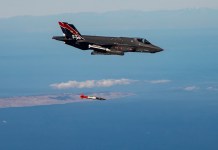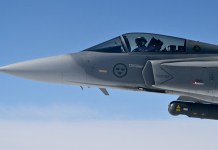The US is gradually shifting its military’s focus to Asia from other global conflict zones, according to a new report.
East Asia and the Pacific have seen the largest concentration of US forces in decades. The shifting global order and the rise of China have necessitated the US to make this large deployment to maintain its competitive edge over the communist nation.
A report by Nikkei Asia mentions that over the past decade the US has deployed more troops in East Asia and the Pacific.
Based on the data from the US Department of Defence, the report traced the changes in the overseas deployment of the US forces. During the Cold war years, the US deployment had been largely concentrated in Europe.
Till 2000, the bulk of the US overseas deployment was in Germany, and the least number in North Africa, the Middle East and South Asia.
Post the 9/11 terror attacks, the US focus shifted to the Middle East, and according to some estimates, more than 100,000 American troops were deployed each in Afghanistan and Iraq, at one point in time. In the last 10 years, the overseas deployment has undergone a massive shift, with the bulk of the US forces now concentrated in East Asia and the Pacific.
The Shifting Global Military Might
The global military might has also undergone a massive shift. While the countries of the erstwhile Soviet bloc have seen more than 50 percent of their military might slashed, they are being replaced by Asian nations. Countries such as Indonesia and the Philippines have boosted their troop strength by 40 percent and 30 percent respectively. India has also increased its troops by 15 percent.
Sailors conduct flight operations on @USPacificFleet aircraft carrier USS Ronald Reagan while underway in the Philippine Sea #FreeAndOpenIndoPacific pic.twitter.com/IycGFWsLU0
— U.S. Indo-Pacific Command (@INDOPACOM) May 26, 2021
The budget on military spending has been on the rise in Asia. Recently Japan has decided to scrap the 1 percent GDP cap on its defense spending. The 1 percent limit had been established in 1976 by then-Prime Minister Takeo Miki. Though abolished subsequently, the cap persisted as an informal guideline in Japan’s defense budget.
Japan claims that this move comes as a result of the changes in Japan’s regional security environment, making the country develop adequate resources for its national security.
China’s Military Strength
China has reduced the number of its troops. But on the other hand, it has scaled up its military hardware. Beijing has increased its fleet of fighter jets, and in fact, has more than the combined total ]of the Japanese Self-Defence Forces and the US military aircraft stationed in Japan.
There has been a marked increase in the number of Chinese missiles and submarines as well. According to the report, the Chinese military is estimated to have more than 950 medium-range ballistic missiles. In 1995, the communist nation was reported to have 50 short-range ballistic missiles, the count of which stood at 750-1500 in 2019.
The rise of China is one of the most important factors behind the US’ shift of focus to Asia. The report states that the US attention to the issues in the Middle East gave China ample time and opportunity to modernize its military and the Asian country now stands as a viable competitor to the US.
In order to recover its fast-losing military balance in Asia, and maintain its edge, the US has been proactive in the region. However, to check China’s growing influence it needs allies.
US-Japan Military Ties
In April 2021, the US President and the Japanese PM issued a joint statement on maintaining peace and stability in the Taiwan Strait, which puts both countries at loggerheads with China. The influence of China in the Indo-Pacific and the world at large was also discussed.
The meeting saw the US reiterate its commitment to the defense of Japan, including the application of Article 5 of the Japan-US Treaty of Mutual Cooperation and Security for the Senkaku Islands.
The forward-deployed #USNavy aircraft carrier #USSRonaldReagan sails past Iwo To, formerly referred to as Iwo Jima, while transiting the Philippine Sea over the weekend on a continuing @US7thFleet patrol. #CVN76 pic.twitter.com/Dxohv1oQRi
— U.S. Pacific Fleet (@USPacificFleet) May 24, 2021
The belligerence of China has been in full display in the South China Sea because of the many maritime disputes it got embroiled in over the past few years. The Quadrilateral Security Dialogue (QUAD) comprising the US, Australia, Japan, and India, is widely viewed as a potent alliance to counter the growing Chinese maritime claims.
China sees it as a response to its growing economic and military might, and in the past has lodged diplomatic protests with QUAD members.
The QUAD has time and again called for a “rules-based maritime order in the East and South China Seas” to counter China’s provocations in the region. However, Beijing continues to see the QUAD as a mechanism to incite discord among the regional powers in Asia.
Washington is also trying to bring as many allies as it could into the QUAD fold. According to a South China Morning Post report, Washington has recently made overtures to South Korea to join the bloc.




